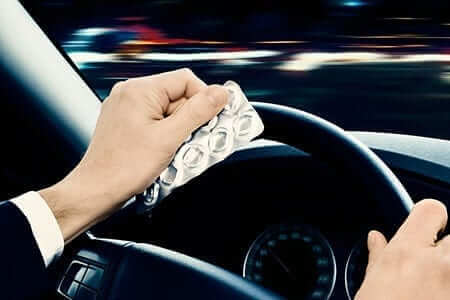Driving gives people a sense of freedom but is also a major responsibility. People with diabetes might face special challenges when they drive. Become a safer driver when you learn about possible complications and be well-prepared to face them.
- People with type 1 and 2 diabetes should take extra care when driving. Sometimes unexpected hypoglycemia happens when you are behind the wheel. Low blood sugar can make you feel shaky, disoriented, anxious and dizzy. In extreme situations, you may get blurred vision, lose consciousness or have a seizure. Establishing a solid diabetes self-management plan can help prevent this potentially dangerous situation. Make sure to test blood sugars frequently if you have hypoglycemic unawareness or the inability to sense low blood sugar.
- Plan ahead when you have diabetes. Even if you have been managing diabetes for years, it makes sense to discuss driving with your healthcare team. Ask what precautions you should take before getting on the road. People with type 2 diabetes might take medications that put them at a higher risk, such as sulfonylurea’s and insulin. Discuss the possible ramifications with your doctor and what to do about them.
- Test your blood sugar each time before you decide to drive. If your blood glucose level is under 80mg/dl, eat 15 grams of carbohydrate before you leave. A snack bar, fruit or crackers and cheese are good options. Once your blood sugar is normal and you feel stable, you can get behind the wheel. Try to plan driving after a meal [blood sugars are higher] if you frequently get low blood sugars. Low blood sugars can resemble someone driving under the influence of alcohol.
- Even when you plan ahead, low blood sugar can cause complications when you drive. If you begin to feel confused or shaky, pull over right away. Test your blood sugar and have 15 grams of carbohydrate. You need to always be prepared and carry glucose tablets for these types of emergencies. You should also keep snack foods in the glove box which contain protein and carbohydrate including peanut butter crackers. Small individual boxes of juice can also be stored in the glove box. Test your blood sugar 15 minutes later to see if you’re ready to get back on the road. If necessary, repeat this process until your blood sugar levels stabilize or you still have symptoms. Report these episodes to your health care provider if they occur more than 2 times.
- Having high blood sugars may also affect your driving. Carry extra bottled water in the car which can dilute elevated blood sugars. Symptoms of high blood sugar including fatigue and blurry vision can make driving difficult. Notify your physician if blood sugars are elevated into the 300s prior to driving. This is to be cautious and see if an action plan needs to be made.
- Take proper care of blood glucose meters used for monitoring your blood sugar when you drive. Remove the meter from the car when you exit. Meters are reliable in moderate temperatures only. Extreme temperatures can damage the meter and reduce its ability to give you an accurate reading.
- Be ready to get on the road by maintaining various medical appointments. See your regular physician to monitor your overall well-being including your blood pressure. Schedule a yearly eye exam to maintain good eye care and verify your ability to see properly when you drive. Ask your health care provider if it would be beneficial to list “DIABETES’ on your driver’s license.
- Certain people with diabetes have long-term complications such as reduced sensation in their extremities, vision difficulties or an amputation. Some of these people continue to drive with assessment, car modification and training from a driving specialist. An occupational therapist can give you a driving skills assessment test to ensure you are still able to drive.
- If driving for long periods of time take frequent rest periods. People with diabetes may be prone to blood clots. Stopping to stretch, walk and stand can reduce your potential risk. Never skip a meal when traveling so plan ahead with sandwiches and drinks or know where and when you will be stopping for food.
- If you discover you are unable to safely drive, there are plenty of ways to stay mobile. Find out about public transportation such as buses, taxis, trams, free shuttles and trains. Walk to local venues to get exercise and some fresh air. Ask friends or family for a ride. Find out about transportation services from community organizations such as local service groups, religious organizations and senior centers.
Many people with diabetes are safe drivers. Know the signs of low and high blood sugars and how to handle them. Get routine physical examinations and consult with your healthcare team about ways to drive safely. Make sure to be prepared with snacks and water.







Leave A Comment